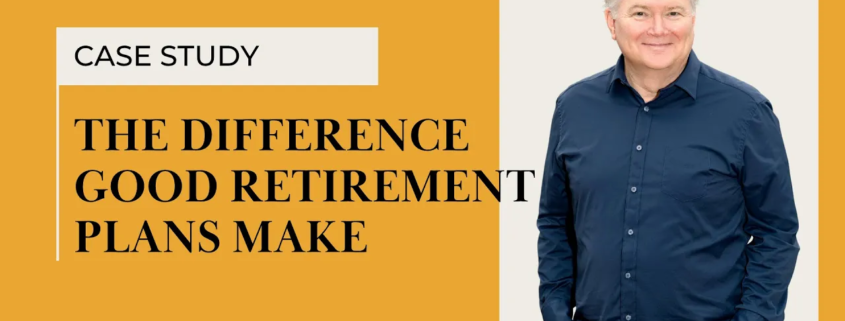Case Study: The Difference Good Retirement Plans Make
In many ways, he was. But years after finalizing his exit, and after wrapping up his retirement plan with Mirador, he reached back out. He wanted to stop by in person. It was the first time we’d ever met face-to-face.
Naturally, we were curious. Was something wrong?
He sat down, shared what he’d been up to in retirement, and then paused.
Then he said something that stuck with us:
“Mike, I just wanted to thank you.”
It wasn’t a generic gesture. He explained that by the time he retired, his defined benefit plan had nearly $2 million in it, almost equal to the amount he received from selling his business.
That amount wasn’t just savings. It was strategy. Without the defined benefit plan, half of that would’ve gone to taxes. The rest? He admitted he probably would’ve spent it. Instead, he had a secure retirement nest egg, and something left over for his kids.
He got choked up when he said it. We did too.
This is why Mirador exists. Not to fill out forms. Not to sell plans. But to create a meaningful, measurable impact in the lives of business owners.
What Is a Defined Benefit Plan?
A defined benefit plan is a qualified retirement plan that promises a fixed, pre-established benefit at retirement. It’s different from a 401(k) where employees contribute their own money. In a DB plan, the employer makes all the contributions, and those contributions are calculated based on the benefit amount targeted at retirement.
These plans allow for large, tax-deductible contributions, especially for older, high-earning business owners nearing retirement.
Is a Cash Balance Plan the Same?
Not exactly. A cash balance plan is a type of defined benefit plan, but with some unique features. Instead of promising a monthly payout, it defines the benefit as a hypothetical account balance. This format makes it feel more like a 401(k), even though it’s still technically a pension plan.
Both plan types offer significant tax advantages, but the cash balance model tends to be more flexible and easier for participants to understand.
How Do Defined Benefit Plans Work with 401(k)s?
Defined benefit and 401(k) plans are not either-or choices. In fact, they often work best together.
We frequently design combo plans, pairing a DB or cash balance plan with a 401(k)/profit sharing plan. This allows business owners to maximize annual contributions and optimize tax deductions, while still providing value to employees.
In Dr. Lee’s case, we used this combination strategy to help him double the total retirement assets he walked away with. Half of that was funded by tax deductions alone.
Who Can Participate in a Defined Benefit or Cash Balance Plan?
These plans are ideal for:
- Business owners in their 40s, 50s, or 60s with high, stable income
- Solo entrepreneurs or small partnerships
- Professional service businesses (doctors, attorneys, consultants)
- Owners who want to make large contributions quickly, especially if they’re catching up on retirement savings
While employees may also participate, DB plans must pass coverage and nondiscrimination testing to stay compliant. That’s where the role of the TPA is essential.
Learn More
To understand how compliance testing, controlled groups, and affiliated service groups can affect defined benefit plans, click here.



